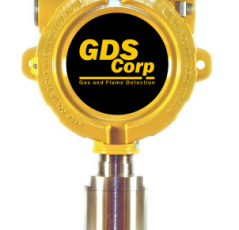In many types of industrial facilities, volatile organic compounds pose some of the greatest threats to the safety of employees. Commonly known as VOC, they can lead to workers suffering from nerve and kidney damage if left undetected. Because of this, companies within the oil and gas industry, as well as wastewater treatment plants, refineries, and processing facilities, have started using VOC gas detectors to protect employees as well as multi-million dollar buildings and equipment. To gain a better understanding of VOC detectors and how they work, here are some important tips to keep in mind.
Networking Capabilities
As monitoring technology has advanced in recent years, VOC sensors have made tremendous strides in networking capabilities. Using microprocessors that employ a web server and database, these sensors can monitor gas levels and make configuration changes if necessary. As a result, the data can be sent in real-time not only to monitoring centers, but also to mobile devices such as smartphones and tablets.
How VOC Meter Detects Compounds
To detect dangerous compounds, these detectors rely on photoionization. One of the newest and most accurate technologies available today, this process can ionize molecules using ultraviolet light, and then measure the electron levels and their flow. In doing so, they can detect various combinations of toxic and combustible gases, allowing them to be used in multiple types of industrial environments.
Programmable Controls
To ensure volatile organic compounds are detected as quickly as possible, VOC monitors are now equipped with programmable controls that virtually eliminate false alarms and allow for strict security parameters to be maintained when calibrating the detectors. Since only select management personnel and emergency workers are usually authorized to change calibration settings, these controls ensure the detectors will produce accurate results.
Optional Alarm Relays
Considered one of the biggest technological advances in VOC detection, optional alarm relays allow sensors to be equipped with strobes, horns, and other warning systems that can help employees learn of impending danger. In addition to this, the sensors also are equipped with back-lit displays, which allow current readings to be easily seen at a distance or in adverse conditions. By being able to change display colors from yellow to red depending on the level of danger, workers and other people in the area will be able to assess the situation and evacuate safely.
A Safer Workplace
Since workers in numerous industrial facilities work around cleaning products, paints, and other solvents on a daily basis, it’s important to have detection systems in place that are reliable and accurate. With the many technological advances such as optional alarm relays, programmable controls, and photoionization, it has become much easier to make factories, processing plants, drilling platforms, and other areas much safer. If you have additional questions about how these detectors can keep your workplace safe, contact a safety consultant at Global Detection Systems. By being able to speak with a qualified industry professional, you will have your questions answered and be able to make the best decision for your company.

